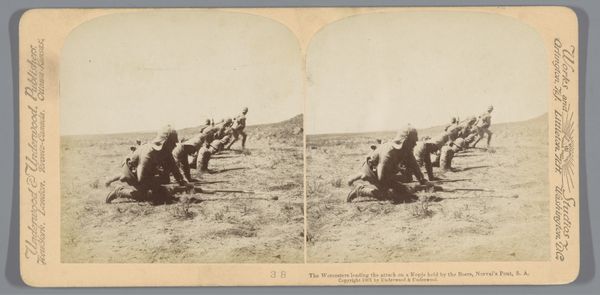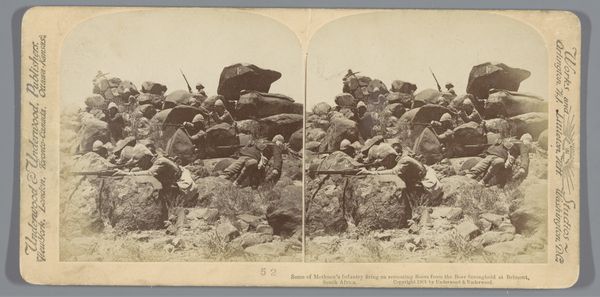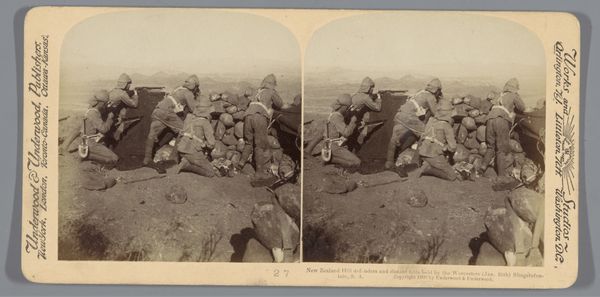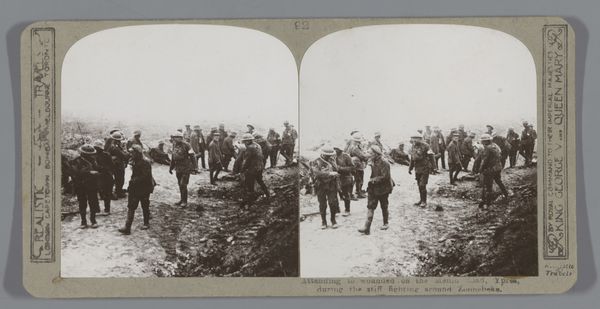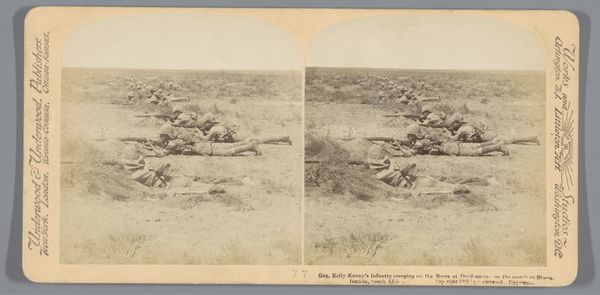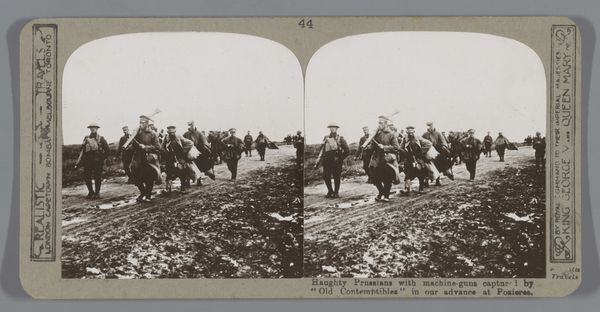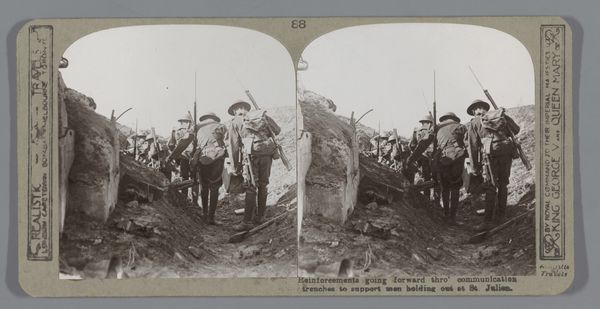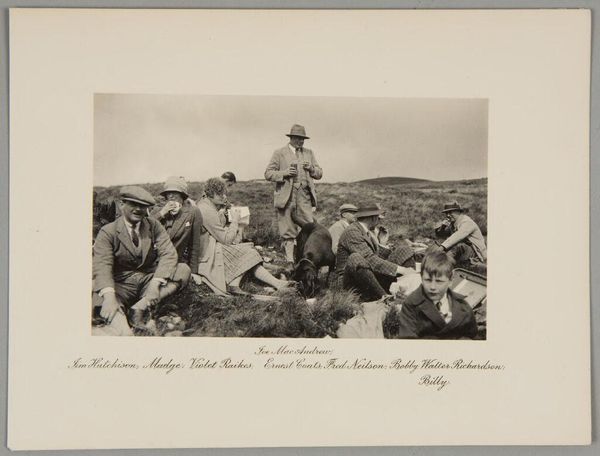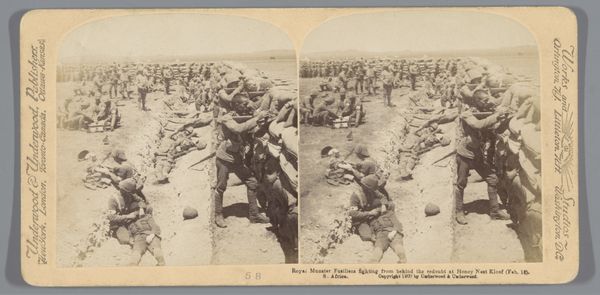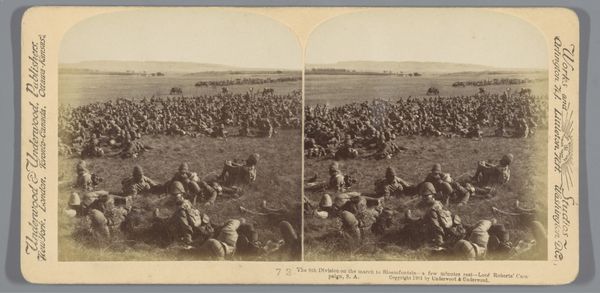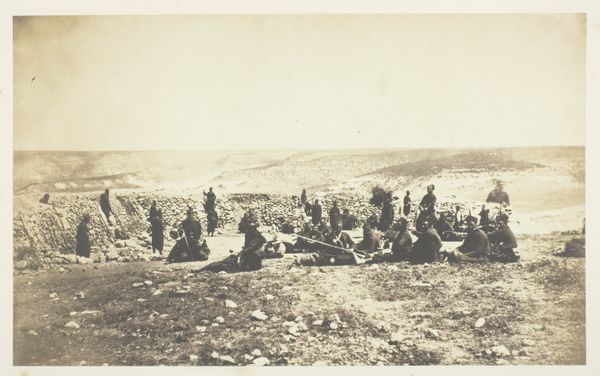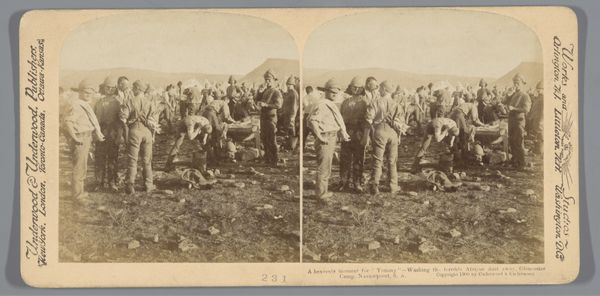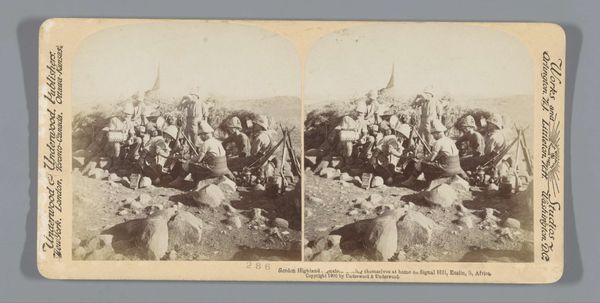
photography, gelatin-silver-print
#
photorealism
#
landscape
#
photography
#
gelatin-silver-print
#
history-painting
#
realism
Dimensions: height 151 mm, width 204 mm
Copyright: Rijks Museum: Open Domain
Curator: This gelatin-silver print, "Boeren in hun stellingen tijdens de slag bij Mafeking" dates back to 1900. The photograph by Jan van Hoepen presents a striking historical document. Editor: It has a really powerful stillness, doesn't it? The monochromatic palette certainly lends a certain gravity. The way the figures are arranged almost reads like a frieze, very formal. Curator: Absolutely, yet the arrangement of the subjects isn't accidental, of course. This depicts Boers in their trenches during the Siege of Mafeking, part of the Second Boer War. Consider how the photographer, presumably embedded within this conflict, captured a very specific perspective— a biased framing, wouldn’t you agree? Editor: True. The focus on the line of soldiers really reinforces a feeling of tense anticipation, almost like we're waiting with them. I find it interesting how the foreground details, the dirt and grasses, create such a textural contrast to the more distant horizon line. It draws you into that immediate space. Curator: I'm particularly struck by the individuals themselves. We are given a glimpse into this faction of citizen soldiers - burghers protecting land they sought to call their own. This raises significant questions about imperialism, identity and the human cost of territorial disputes in turn-of-the-century colonial wars. How do you feel these contextual clues play within the formal composition of the image? Editor: It shifts it. Initially, I was simply observing tonal distribution and balance of light. But understanding its documentary significance adds weight and emotional impact to what I see in front of me. I feel a distinct sense of human fragility set against the backdrop of war, something the landscape's emptiness further accentuates. Curator: So, do you find that now we acknowledge this image exists at the intersection of colonial history, documentary photography, and cultural identity, we approach this artwork with a greater awareness? Editor: Definitely. Seeing is no longer just seeing. It becomes informed and enriched by contextual understandings. Curator: Indeed. Perhaps this prompts the viewer to further investigate the complicated tapestry of colonialism in South Africa, and photography’s power in immortalizing certain perspectives in history.
Comments
No comments
Be the first to comment and join the conversation on the ultimate creative platform.

